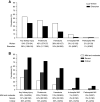Prevalence of Kidney Injury and Associations with Critical Illness and Death in Patients with COVID-19
- PMID: 32943396
- PMCID: PMC7646240
- DOI: 10.2215/CJN.04780420
Prevalence of Kidney Injury and Associations with Critical Illness and Death in Patients with COVID-19
Abstract
Background and objectives: Coronavirus disease 2019 is spreading rapidly across the world. This study aimed to assess the characteristics of kidney injury and its association with disease progression and death of patients with coronavirus disease 2019.
Design, setting, participants, & measurements: This is a retrospective study. Two representative cohorts were included. Cohort 1 involved severe and critical patients with coronavirus disease 2019 from Wuhan, China. Cohort 2 was all patients with coronavirus disease 2019 in Shenzhen city (Guangdong province, China). Any kidney injury was defined as the presence of any of the following: hematuria, proteinuria, in-hospital AKI, or prehospital AKI. AKI was defined according to the Kidney Disease Improving Global Outcomes (KDIGO) creatinine criteria. The primary outcome was death at the end of follow-up. The secondary outcome was progression to critical illness during the study period.
Results: A total of 555 patients were enrolled; 42% of the cases (229 of 549) were detected with any kidney injury, 33% of the cases (174 of 520) were detected with proteinuria, 22% of the cases (112 of 520) were detected with hematuria, and 6% of the cases (29 of 520) were detected with AKI. Of the 29 patients with AKI, 21 cases were recognized as in-hospital AKI, and eight were recognized as prehospital AKI. Altogether, 27 (5%) patients died at the end of follow-up. The death rate was 11% (20 of 174) in patients with proteinuria, 16% (18 of 112) in patients with hematuria, and 41% (12 of 29) in the AKI settings. Multivariable Cox regression analysis showed that proteinuria (hazard ratio, 4.42; 95% confidence interval, 1.22 to 15.94), hematuria (hazard ratio, 4.71; 95% confidence interval, 1.61 to 13.81), and in-hospital AKI (hazard ratio, 6.84; 95% confidence interval, 2.42 to 19.31) were associated with death. Among the 520 patients with noncritical illness at admission, proteinuria (hazard ratio, 2.61; 95% confidence interval, 1.22 to 5.56) and hematuria (hazard ratio, 2.50; 95% confidence interval, 1.23 to 5.08) were found to be associated with progression to critical illness during the study period.
Conclusions: Kidney injury is common in coronavirus disease 2019, and it is associated with poor clinical outcomes.
Podcast: This article contains a podcast at https://www.asn-online.org/media/podcast/CJASN/2020_09_18_CJN04780420.mp3.
Keywords: COVID-19; acute kidney injury; critical illness; hematuria; proteinuria.
Copyright © 2020 by the American Society of Nephrology.
Figures




References
-
- Hui DS, I Azhar E, Madani TA, Ntoumi F, Kock R, Dar O, Ippolito G, Mchugh TD, Memish ZA, Drosten C, Zumla A, Petersen E: The continuing 2019-nCoV epidemic threat of novel coronaviruses to global health. The latest 2019 novel coronavirus outbreak in Wuhan, China. Int J Infect Dis 91: 264–266, 2020. - PMC - PubMed
-
- World Health Organization : Coronavirus Disease 2019 (COVID-19) Situation Report 77, 2020. Available at: https://www.who.int/docs/default-source/coronaviruse/situation-reports/2.... Accessed April 7, 2020
-
- Yang X, Yu Y, Xu J, Shu H, Xia J, Liu H, Wu Y, Zhang L, Yu Z, Fang M, Yu T, Wang Y, Pan S, Zou X, Yuan S, Shang Y: Clinical course and outcomes of critically ill patients with SARS-CoV-2 pneumonia in Wuhan, China: A single-centered, retrospective, observational study [published correction appears in Lancet Respir Med 8: e26, 2020 10.1016/S2213-2600(20)30103-X]. Lancet Respir Med 8: 475–481, 2020. - PMC - PubMed
-
- Xu Z, Shi L, Wang Y, Zhang J, Huang L, Zhang C, Liu S, Zhao P, Liu H, Zhu L, Tai Y, Bai C, Gao T, Song J, Xia P, Dong J, Zhao J, Wang FS: Pathological findings of COVID-19 associated with acute respiratory distress syndrome [published correction appears in Lancet Respir Med 8: e26, 2020 10.1016/S2213-2600(20)30085-0]. Lancet Respir Med 8: 420–422, 2020. - PMC - PubMed
Publication types
MeSH terms
LinkOut - more resources
Full Text Sources

